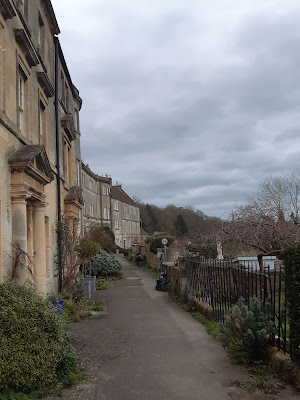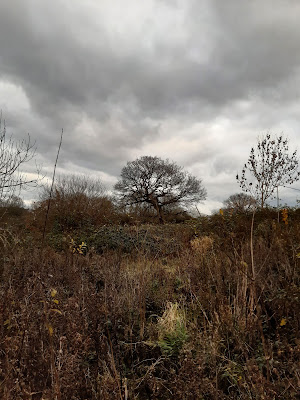Covid put paid to a lot of things, one of them being the Words and Ears poetry evenings that used to take place in The Swan at Bradford-on-Avon. (It seems churlish to complain, given that the organiser, Dawn Gorman, now presents 'The Poetry Place' on West Wilts Radio - another boon for the poetry community in the West - but I do miss the rather more plentiful opportunities we used to have for in-person mingling with the poets of Wiltshire and Somerset.
I was really pleased, then, to be able to join a few of them for a one-off Words and Ears Live at the 2024 Bradford Roots Music Festival. First though, since I'd arrived in very good time, a little visit to the lovely Chapel of St Mary, more commonly known as St Mary Tory,
In case you're wondering, 'Tory' has nothing to do with the political party; rather, it derives from the word 'tor' and refers to its location, perched high on the hill above the 17th century suburb of Newtown.
Luckily, I was winding my way to Mary Tory from the top of the hill, rather than uphill from the centre of Bradford-on-Avon, which I've heard is a fair climb.
Even so, my route was still steepish in places.
Sadly, it was a dull, dark day, and the Westbury White Horse wasn't visible on thie horizon, but I did enjoy the rooftops with their graduated tiles, layered in the distinctive Cotswold manner ...
St Mary Tory
The chapel is thought to date from the second half of the 15th century, and was originally a pilgrim chapel on the route between Glastonbury and Malmesbury. The antiquary, John Leland, came across it in his 'Itinerary' of 1533, and John Aubrey, chronicler of the 17th century, considered it 'the finest hermitage I have seen in England'. By the 19th century it was a ruin, and was rebuilt, in its original, late Perpendicular style, by T B Saunders QC.
The lovely East Window, was designed and made by Mark Angus of Bath in 1999.
It felt like a very peaceful, special place, but I couldn't linger too long as I had poems to read. I duly arrived back at the festival slightly pink and breathless, but my poems - featuring Bob Dylan, David Bowie, Joe Strummer and Ian Dury - were well received, and I was also interviewed by Dawn for West Wilts radio about my forthcoming collection, 'Love the Albatross'.
On the Golden Gudgeon stage - clockwise - Linda Saunders with Dawn Gorman during the sound check, Jeff Phelps, Dawn and Frances-Anne King, Eileen Cameron, Chris Macfarlane, Linda Saunders, Dee Way and Ruth Sharman
A funny thing happened when I was talking to a member of the audience, who was wearing a bird headband, about wassailing, specifically the time we wassailed my grandmother's apple tree which my friend had driven over from my old garden on top of her Morris Traveller and replanted, and she said 'Dru Marland'! Which is exactly what I love about our community and our corner of the world.
































































































